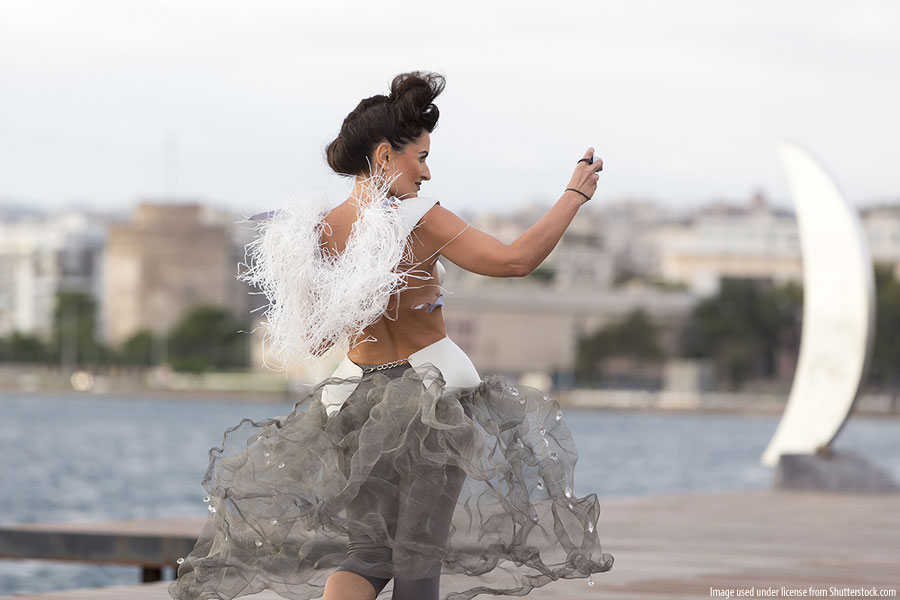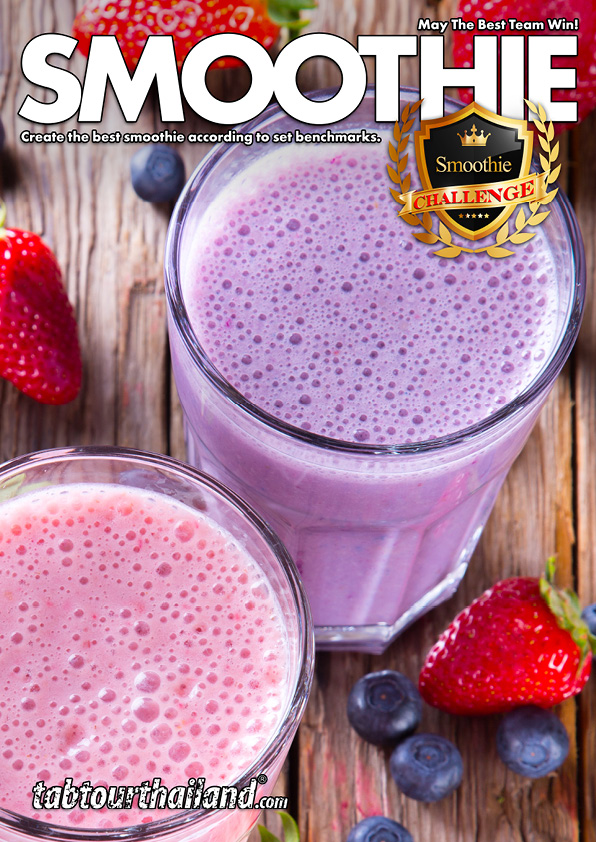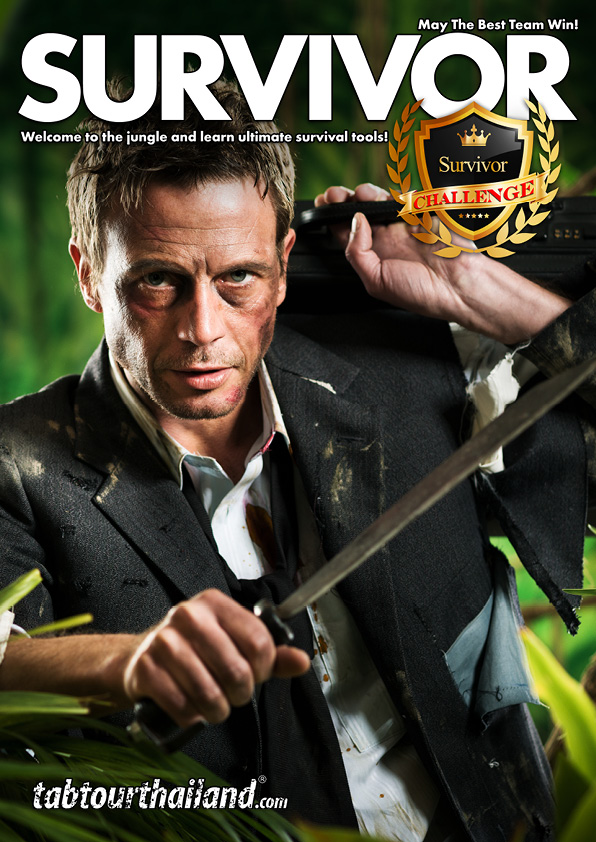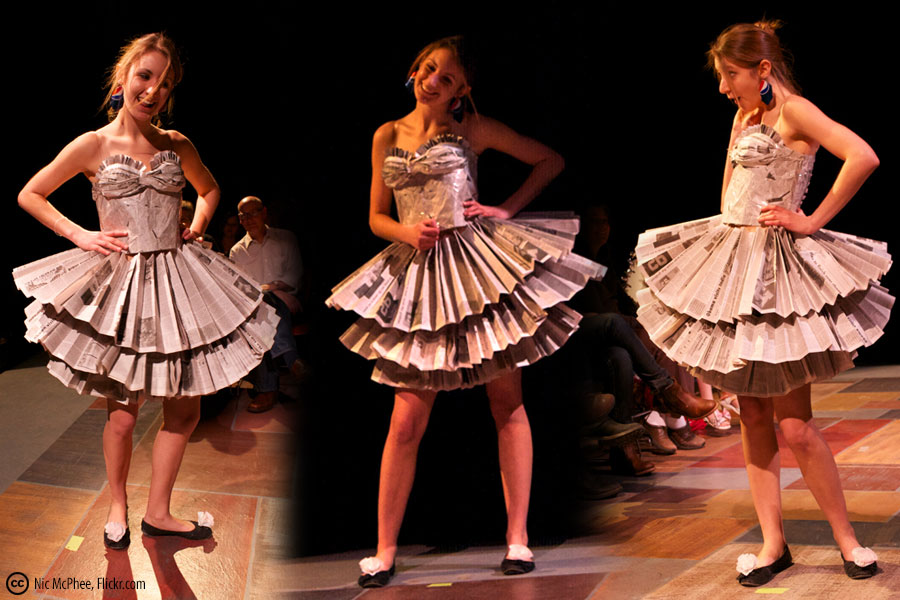Intro to Trashion
Trashion (a portmanteau of “trash” and “fashion”) is a term for art, jewelry, fashion and objects for the home created from used, thrown-out, found and repurposed elements. The term was first coined in New Zealand in 2004 and gained in usage through 2005. Trashion is a subgenre of found art, which is basically using objects that already have some other defined purpose, and turning it into art. In this case, trash is used.
Initially trashion was used to describe art-couture costume usually linked to contests or fashion shows; however, as recycling and ‘green’ fashion become more prevalent, trashion has taken a turn for the more wearable. The term is now widely used in creative circles to describe any wearable item or accessory that is constructed using all or part materials that have been recycled, including clothing that has been thrifted and reconditioned.
Philosophy
Trashion is a philosophy and an ethic encompassing environmentalism and innovation. Making traditional objects out of recycled materials can be trashion, as can making avant-garde fashion from cast-offs or junk. It springs from a desire to make the best use of limited resources. Trashion is similar to upcycling and refashion, although it began with specific fashion aspirations. Like upcycling, trashion generates items that are valued again, but these may be low-cost or high-cost, perhaps depending on the skill of the artist. The environmental aim of trashion is to call attention to the polluting outcome of waste.

History
Indigenous people throughout the world have used salvaged materials to create new objects for an indeterminate number of years. Africans have made bags from rice and juice packets, Haitians have made sculptural jewelry from old oil cans, and American settlers have made quilts and rugs from cast-off clothing and feed sacks. People were making something from nothing long before the word “trashion” was coined; however, Trashion usually refers to “making something from nothing” for aesthetic purposes, not for practical use.
In the 1990s, American artist Ann Wizer began using plastic waste in her wearable art. Working in the Philippines, and titling her line the ‘Virus Project,’ Wizer created a set of costumes made entirely from post consumer plastic waste to celebrate Earth Day. The first plastic packaging tote bags were accessories to these costumes. There are now numerous small scale poverty intervention projects throughout Southeast Asia in the process of creating similar trashion accessories and other fashion and homeware items. This includes the XSProject, a charity originally founded by Wizer and based in Jakarta.
The Trashion movement took off in New York City in late 2004, early 2005 through underground parties on the lower east side of Manhattan at a club called Plan B. Trashion was part of the fashion of Urban Gypsy Circus, which is an interactive art party thrown by multi-media artist Miz Metro. These parties exhibited art made out of recycled materials and included monthly “TRASHION FACEOFFS” where 2 designers would compete to be the “TRASHION QUEEN”. This led to Matthew Namer & Miz Metro curating the TRASHION Art show at Gallery 151 on exhibit during the summer of 2009 on the lower east side of Manhattan.
Trashion has become a very popular style of art. For example, in 2006, Julia Genatossio launched Monsoon Vermont, a trashion design house. The company designs items such as umbrellas, shower curtains and backpacks which are made from Jakarta’s scavenged trash. Unlike the XSProject, Monsoon Vermont is a for-profit venture.
Trashion is also the subject of school projects, local fashion shows, community center exhibits, and fundraisers, among other purposes.
Some contemporary trashion artists include Marina DeBris and Nancy Judd.
“Trashion” by Wikipedia, text is available under the Creative Commons Attribution-ShareAlike License

Fashion Challenge
This team building event takes you through a journey from sketch to design of haute couture. Your team will go trough a mind-boggling adventure to create the most stylish outfit and to outperform competing teams on the cat walk.
More Brochures from tabtourasia

Smoothie Challenge
Our Smoothie Challenge is an experience that puts team work and communication skills to the fore, whilst providing many opportunities for fun and laughter.

Survivor Challenge
How would your team survive if you had to survive 3 days in the deep jungle? This energetic team building includes all elements of survival and can be played in hotel gardens, beach or the real jungle.

Raft Craft Challenge
Your team will also build a raft together with the materials provided by the instructors and sail it as a team with set goals and challenges.

